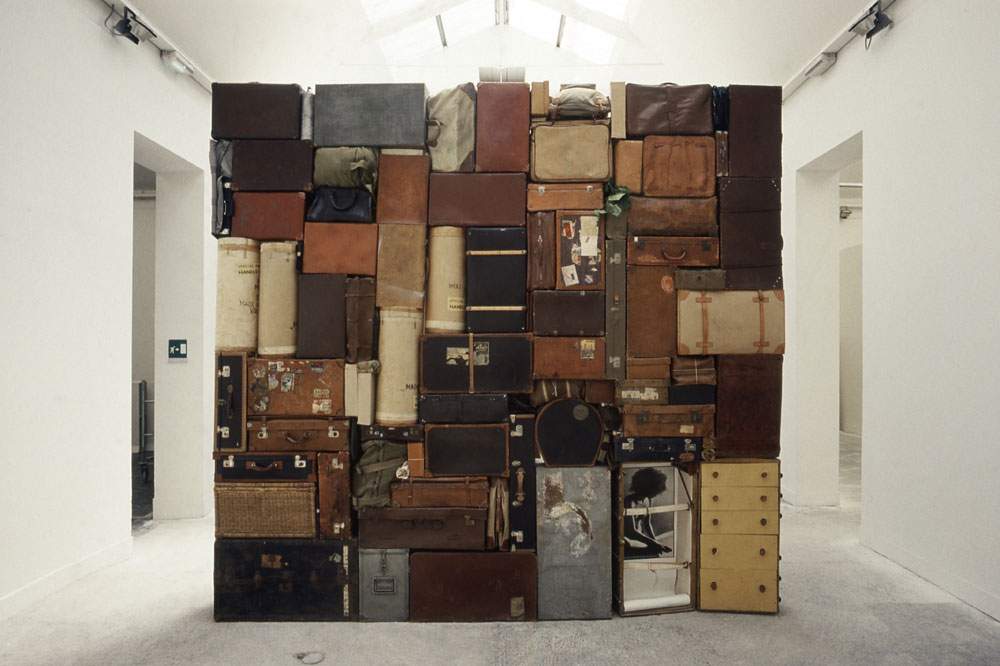Palazzo Vecchio welcomes the Western or Wailing Wall by Fabio Mauri
On the occasion of Holocaust Remembrance Day, the Museo di Palazzo Vecchio will host Fabio Mauri’s installation Il Muro Occidentale o del Pianto (The Western Wall or of Wailing ) from January 27, 2020, in the Sala dei Gigli, a Museo Novecento OFF project conceived and curated by Museo Novecento artistic director Sergio Risaliti.
Fabio Mauri (Rome, 1926 - 2009) is one of the leading exponents of the neo-avant-gardes of the second half of the twentieth century and has addressed the theme of memory several times throughout his artistic production, questioning the role of evil in human history.
The Western or Wailing Wall is a four-meter wall made up of suitcases and trunks of various sizes and materials, such as wood, leather, canvas, stacked neatly. The installation was first presented in 1993 at the XLV Venice Biennale; in 2011 it was exhibited at MAXXI in Rome and in 2013 again at the Venice Biennale. The striking work recalls the themes ofexile,forced exodus, and migration. “If pain did not exist, language would have long since ceased to exist,” the artist stated. The text accompanying the installation since its first exhibition, written by Mauri, reads, “The Western or Wailing Wall, as the remaining wall of Solomon’s Temple is called in Jerusalem, is here rebuilt with suitcases. Attempting to represent that necessary wall of ideal or intellectual faith, among all the baggage in transit, forced to expatriate, or bring with them ashy identities. It is a construction of dissimilar provenances that stands on its own, with no other support than its own obvious complexity. The soft, the hard, the cardboard, the leather are, in this wall, stones and people, a single self-supporting collage. Even in Auschwitz, one of the most impressive documents is built by a pile of suitcases. Each one, in the name and address written on it, implies the certainty of return.” He continues, “In the nooks and crannies of the Western or Wailing Wall, the Israelites stuffed paper tickets with prayers: relating to the soul, affections, bodies, how to live life on earth. I simulated them in a single roll of cloth. A kind of prayer of art. The Wall is the place, the Israelites say, where God undoubtedly listens: it is the place of value, then. A plant also grows there, a sign of a continuation of intermingled existence that the dumb and square stones or the empty and inert suitcases cannot prevent either.”
The installation will be inaugurated on Monday, January 27, at 1 p.m. and will be followed by a short talk given by Professor Giacomo Marramao, entitled The Horror of the Shoah in the Art of Fabio Mauri.
In addition, on the occasion of Holocaust Remembrance Day, the Museo Novecento will have free admission. The work will be visible to the public until February 23, 2020.
Image: Fabio Mauri, The Western Wall or Wailing Wall (1993; suitcases, bags, crates, leather, canvas and wood wrappings, 400x400x60 cm)
© Artwork: Fabio Mauri with citation of part of photograph “Ebrea,” 1971 by Elisabetta Catalano relating to Fabio Mauri’s work “Ebrea”
XLV Venice Biennale
Photo: Graziano Arici
Courtesy the Estate of Fabio Mauri and Hauser & Wirth
 |
| Palazzo Vecchio welcomes the Western or Wailing Wall by Fabio Mauri |
Warning: the translation into English of the original Italian article was created using automatic tools. We undertake to review all articles, but we do not guarantee the total absence of inaccuracies in the translation due to the program. You can find the original by clicking on the ITA button. If you find any mistake,please contact us.




























